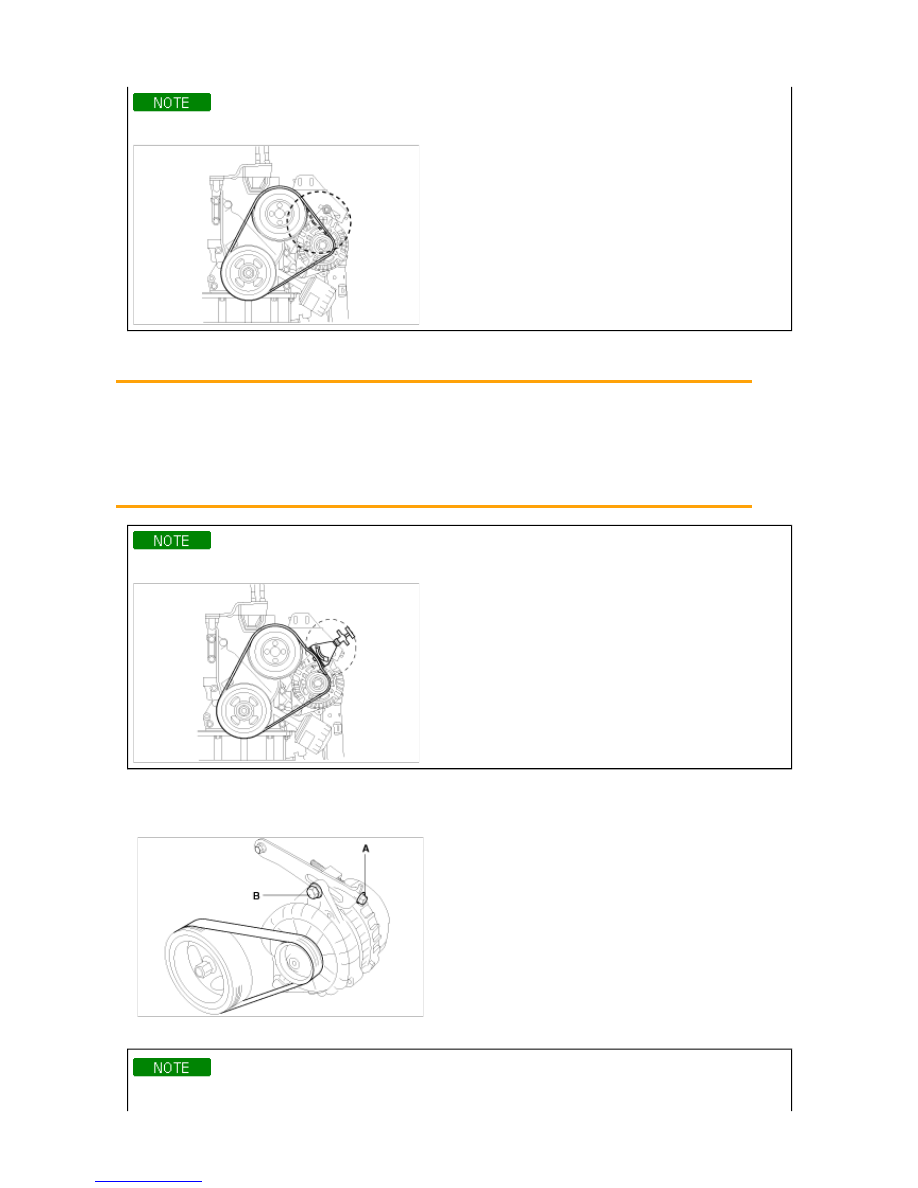Hyundai Tiburon (2003 year). Manual - part 13

Belt tension gauge method :
Attach the belt tension gauge to the belt and measure the tension. Follow the gauge manufacturer's instructions.
If adjustment is necessary :
If the belt is worn or damaged, replace it.
Tension
Used Belt : 340~490 N (35~50 kgf, 77~110 lbf)
New Belt : 690~880 N (70~90 kgf, 150~200 lbf)
Deflection
Used Belt : 8.5 ~ 11.5 mm (0.33 ~ 0.345 in)
New Belt : 5.5 ~ 8.0 mm (0.22 ~ 0.361 in)
If the belt is worn or damaged, replace it.
1. Loosen the adjusting bolt(A) and the lock bolt(B).
2. Move the alternator to obtain the proper belt tension, then retighten the nuts.
3. Recheck the deflection or tension of the belt.
It is not necessary to adjust the tension of the drive belt because of the auto-tensioner.